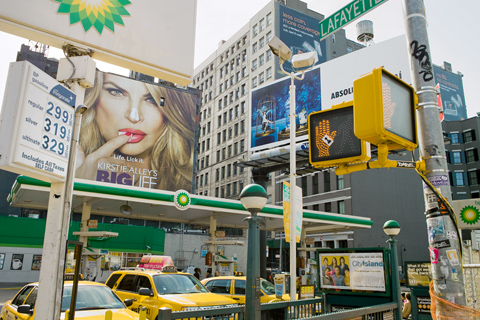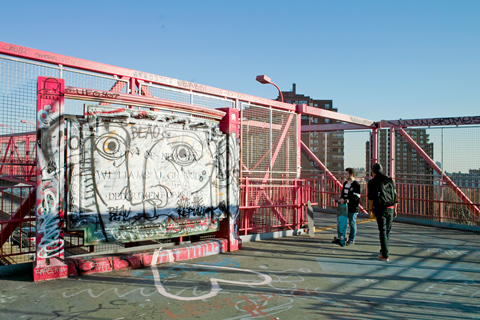Houston and Lafayette Street — © Brian Rose
Williamsburg Bridge — © Brian Rose
Two faces.
***
I receive an email newsletter about Amtrak from a cousin who believes fervently in open market solutions to what ails American rail transport. Although I don’t generally agree with his take on things–knowledgeable as he is on the subject–his newsletter often provides interesting inside information.
Earlier this month there was a “town hall” meeting in Chicago hosted by the top brass of Amtrak in which several topics were discussed, one of them being Amtrak Photography and Videography Guidelines. I recall reading somewhere that rail buffs have sometimes been hassled by Amtrak police for taking photographs in and around stations and other facilities.
It seems, according to the newsletter, that Amtrak is trying to strike some kind of reasonable balance concerning photography–they would like to be notified in advance if one is planning on taking pictures beyond casual travel photography. The newsletter states: “Given the proven use of photography by terrorists in preparation for attacks on infrastructure, it is not unreasonable to have a few, simple, reasonable rules.”
This statement, which I assume echoes something said by the chief of Amtrak police, is an example of the very slippery slope we continue to cascade down as a society. All photographers are suspect because one might be a terrorist on a scouting mission. Inevitably, the most serious photographers with expensive equipment get singled out–God forbid the use of a tripod. Never mind that would be terrorists have no need of tripods, view cameras, or gigantic zoom lenses. They can easily get by with cell phones or invisible spy cameras. They can even walk around using the unaided eye to check things out.
There may be legitimate reasons to limit photography in public and semi-public places like train stations. Commercial photo shoots and film productions are potentially disruptive. But ordinary picture taking–documenting the world we move around in–should be encouraged, not considered subversive.

